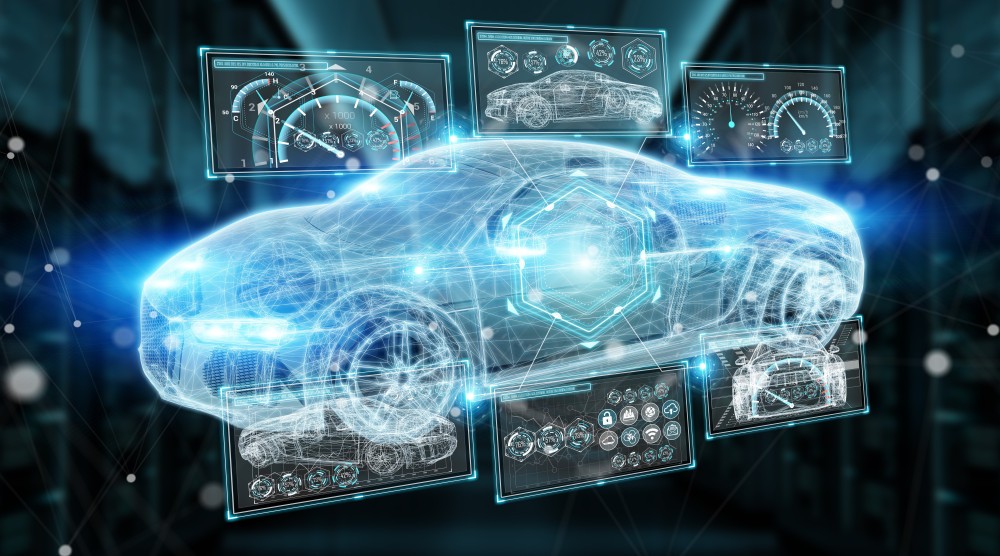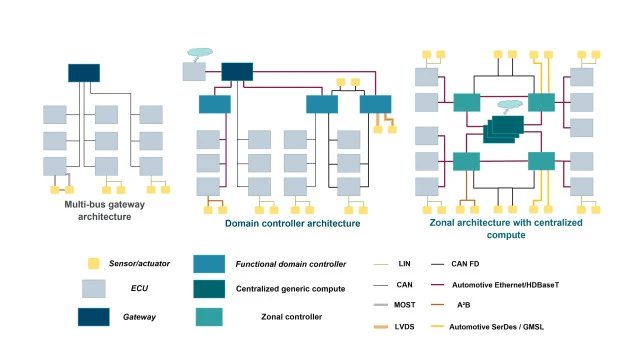Software, the key to the vehicle of the future

The automotive world is in continuous change, and during the last few years, it has been focusing mainly on connected and self-driving vehicles.
Vehicles are undergoing significant evolution, and every day they offer new features, are more complex and require enhanced safety measures. All this is achieved by including new services and SW features. Studies have found that in the last decade, there has been a more than 10-fold increase in the number of lines of code in vehicles.
Software is taking on more and more important tasks in cars, facilitating data exchanges with other road users and with infrastructure, updating vehicles from the cloud and, progressively, the arrival of autonomous driving.
This increasing prominence of software in vehicles, with the increasing number of lines of code and complexity associated with the vehicle functions, means that more computing and integration power is required.
This evolution of SW developments is bringing about a transition and transformation in vehicles’ electrical and electronic architecture as well.
This began as a distributed architecture, where an ECU (Electronic Control Unit) for each service or feature was installed in the vehicle and interconnected with other ECUs if necessary. Although in most situations, there was little interaction between them. Each of these ECUs was composed of its own HW and SW with an architecture that, in most cases, was totally different and customized for the different platforms available. This implied significant complexity and difficulty in maintaining and solving vehicle problems and made it very difficult to reuse many SW developments between different vehicles or manufacturers.
Seeing that this complexity would tend to be increasing, alternative architectures began to be studied, which have been defining automobiles’ architectural evolution. The first step was to create specific networks with those ECUs that needed to communicate with each other or were part of specific features, constituting what is known as a centralized domain architecture. The domain ECUs are connected to the different functional ECUs via the CAN bus and an ethernet connection. This architecture supports more complex functions, has greater flexibility and offers a higher-speed communications network.
For the future, work is underway to define zonal architectures, which can solve the problems of domain architecture by grouping ECUs that are physically close together under a single zone controller. This unit is a master to process all the data from the different zones. The central unit and the ECUs are connected through an ethernet connection.
The concept of zonal E/E architectures completely decouples SW functionalities from hardware. These SW components or features can be executed on remote servers located in the cloud, either associated with specific tasks or on demand. This paradigm shift in architecture opens up new perspectives and facilitates a virtually unlimited number of options.

Another drawback that has arisen with all the evolution that architectures are undergoing is the diversity of HW platforms and operating systems (OS) used by each of the ECUs. This has led different OEMs to look for new strategies to minimize development and increase the portability and reusability of the SW. This strategy consists of creating abstraction layers, thus achieving SW developments that are independent of both the HW and the OS used, thereby achieving standard platforms that can be used in different vehicles. These abstraction layers also provide other advantages, such as: facilitating new developments by reducing their complexity and development and integration time, reducing time spent on maintenance and bug fixing. Examples include Mercedes with MB.OS, a data-driven and easily upgradable operating system that will establish the car’s connection to the cloud, and Volkswagen with VW.OS that will be simpler and more intuitive and will greatly facilitate remote updates.
The automotive world is continuously evolving and developing, and the set of challenges promises to be increasing in the coming years. The until recently CEO of Volkswagen, Herbert Diess, estimated that “software will account for 90% of future innovations in automobiles.” In the words of Zoran Filipi, chairman of the Automotive Engineering Department of Clemson University’s International Center for Automotive Research, “No other industry is undergoing such rapid technological change as the automotive industry,” and software is playing a vital role in this revolution.
For more than 18 years now, GMV has been working with OEMs and Tier-1 suppliers and developing solid experience in automotive software engineering, carrying out developments according to the most demanding standards required in automotive software (such as Automotive SPICE CL3) and working on different platforms and operating systems, which allows us to be part of the car of the present and the car of the future.
Author: Beatriz García Navarro